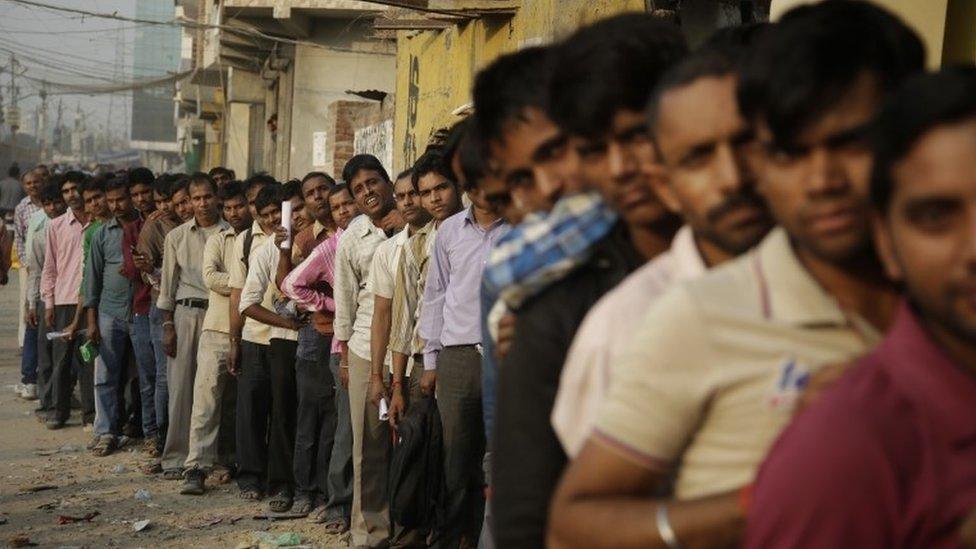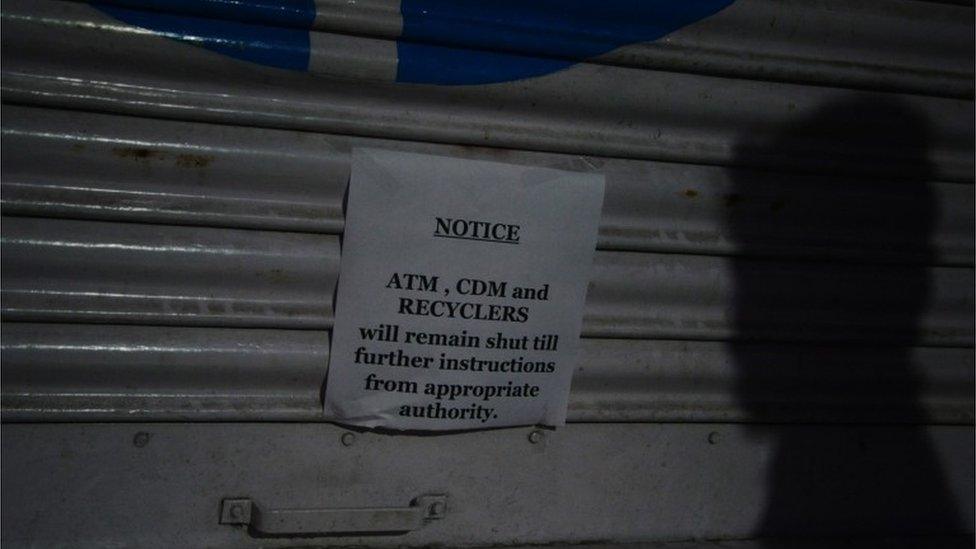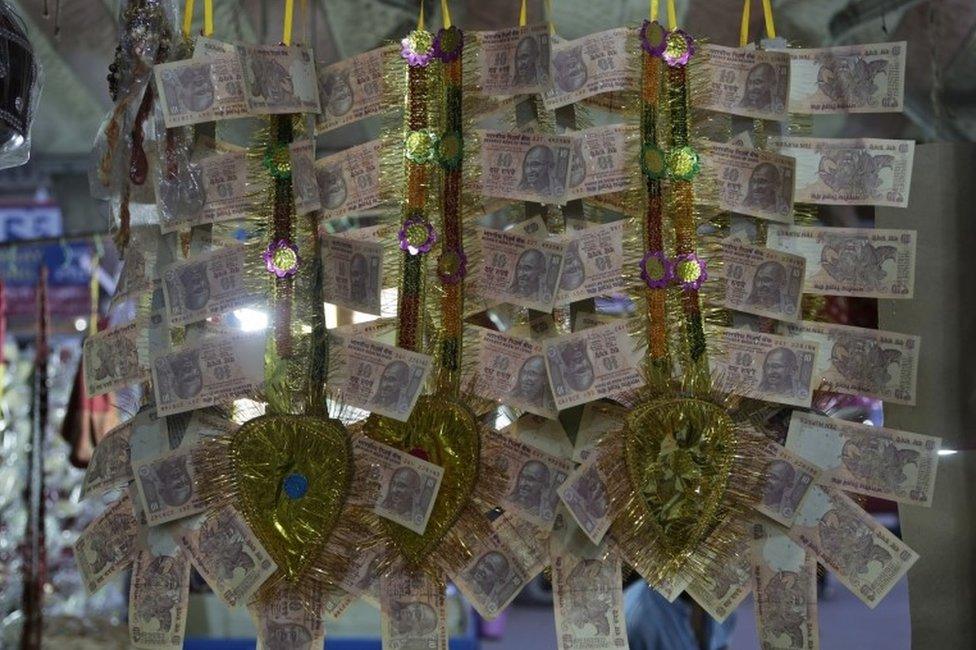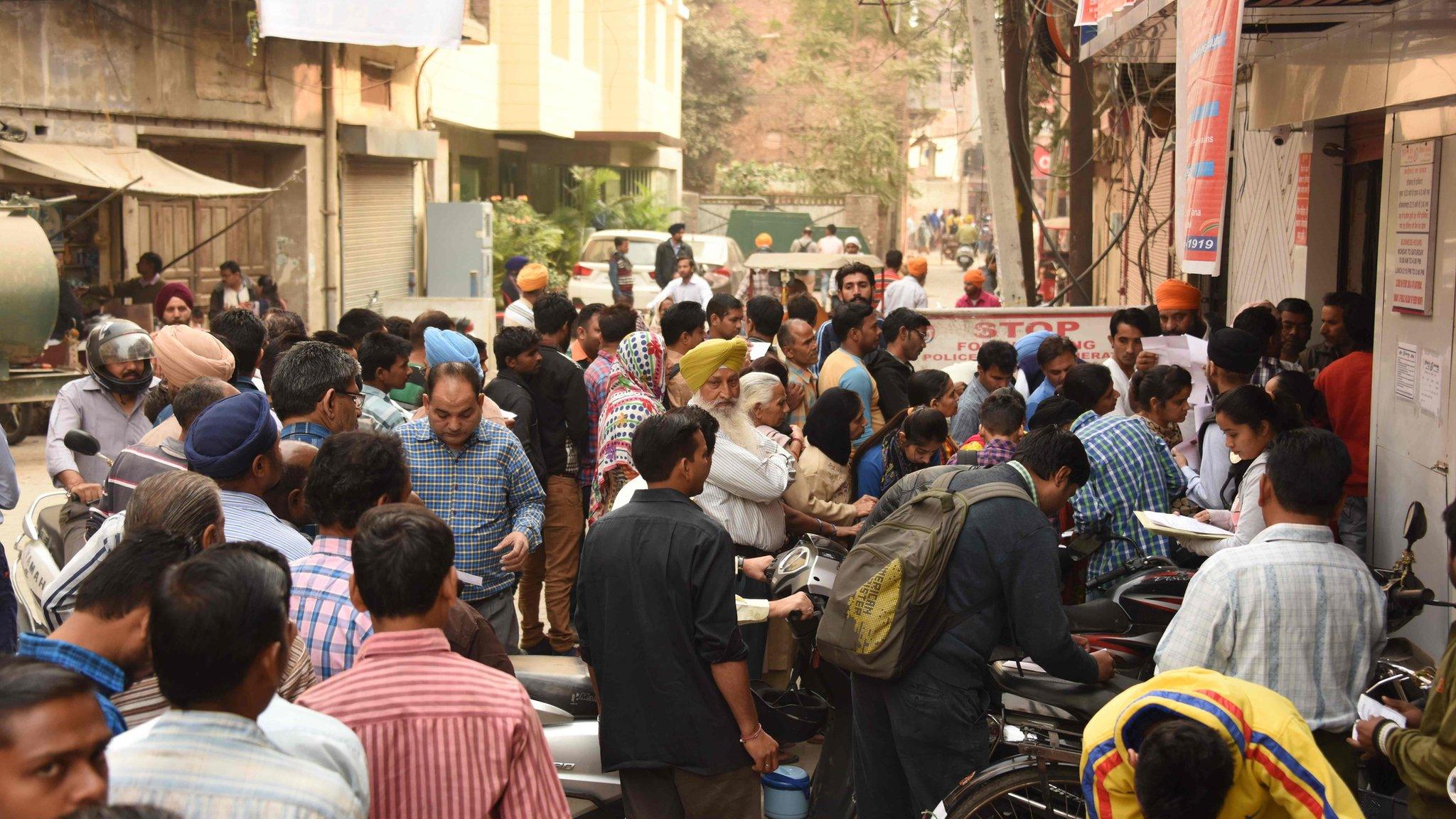India rupee ban: Garlands of money and other images of a cash crisis
- Published

Millions of people have been queuing up outside banks all across India, six days after the government said that 500 ($7.6) and 1,000 rupee notes were no longer valid.
It's an effort to crack down on so-called black money and corruption, but many machines are not working or have run out of cash, leading to long queues and fights.
This is what a cash crisis has looked like.

Patience sometimes turns into frustration as Indians stand for hours on end to deposit and exchange the discontinued currency notes over the weekend.

Tempers ran high as millions of anxious people waited for hours in queues. In many places, scuffles broke out.

Across the country, many banks and ATM cash machines were shut, adding to the woes of the people.

Garlands made of currency notes are in demand during the wedding season. Most use high denomination notes, but as they are no longer valid, many are using garlands made of 100, 50 or even 10 rupee notes.

The government says banks have received 3 trillion rupees ($44bn; £35bn) of large denomination notes since the move was announced on Tuesday night.
- Published12 November 2016

- Published12 November 2016
- Published10 November 2016
